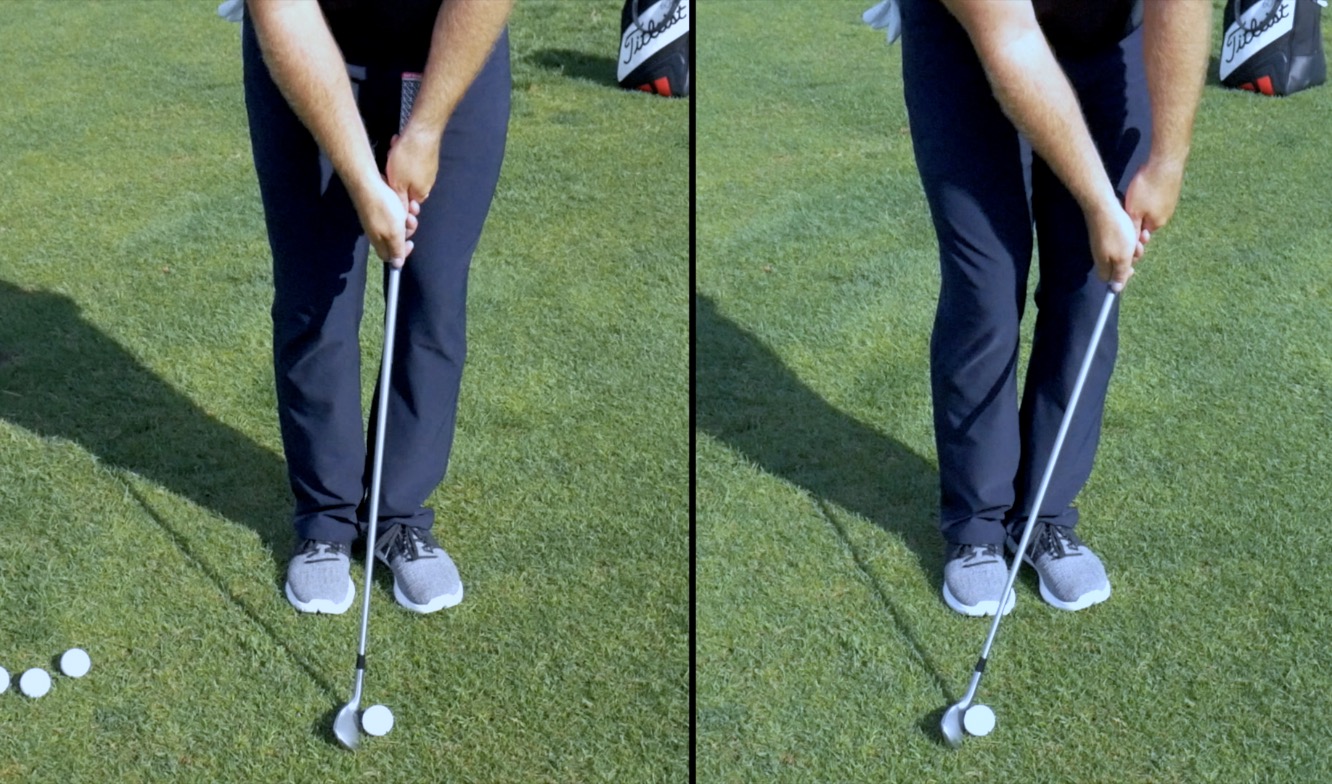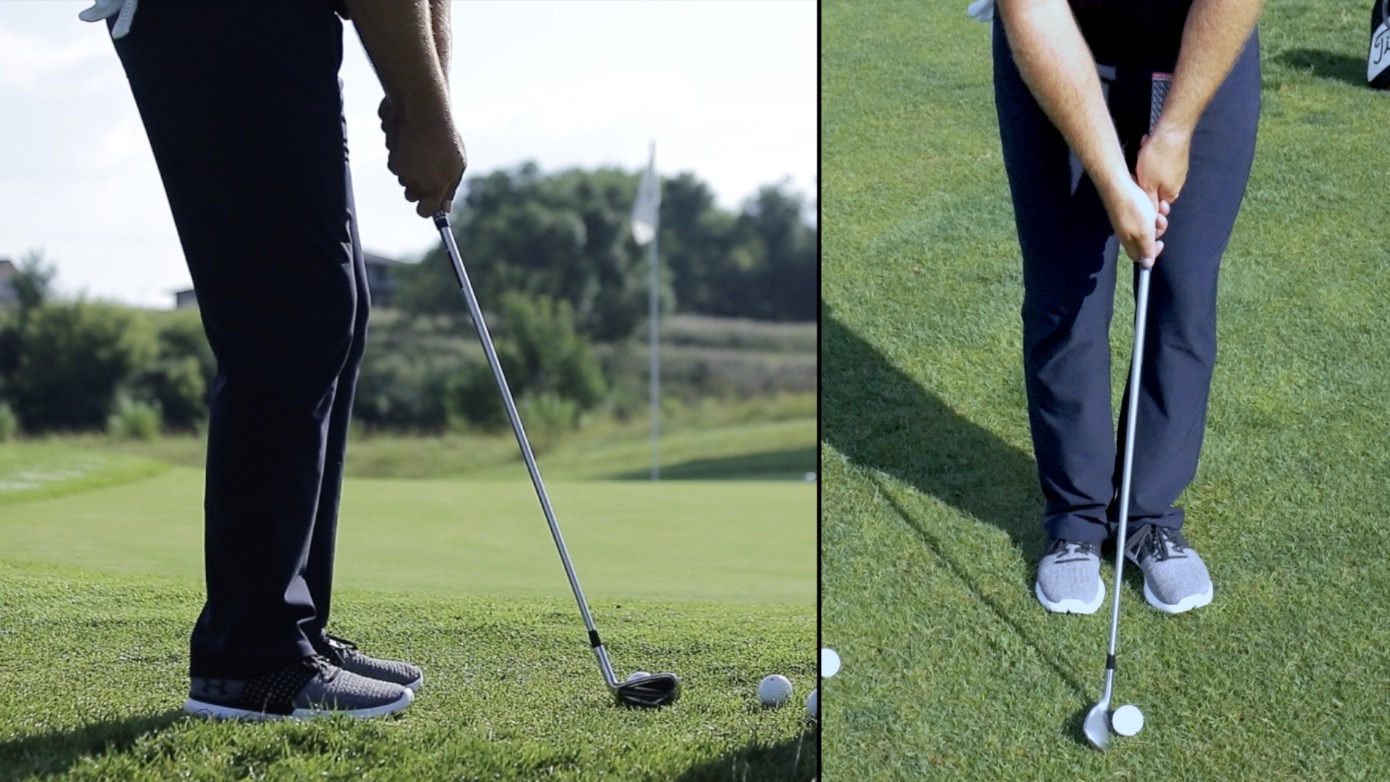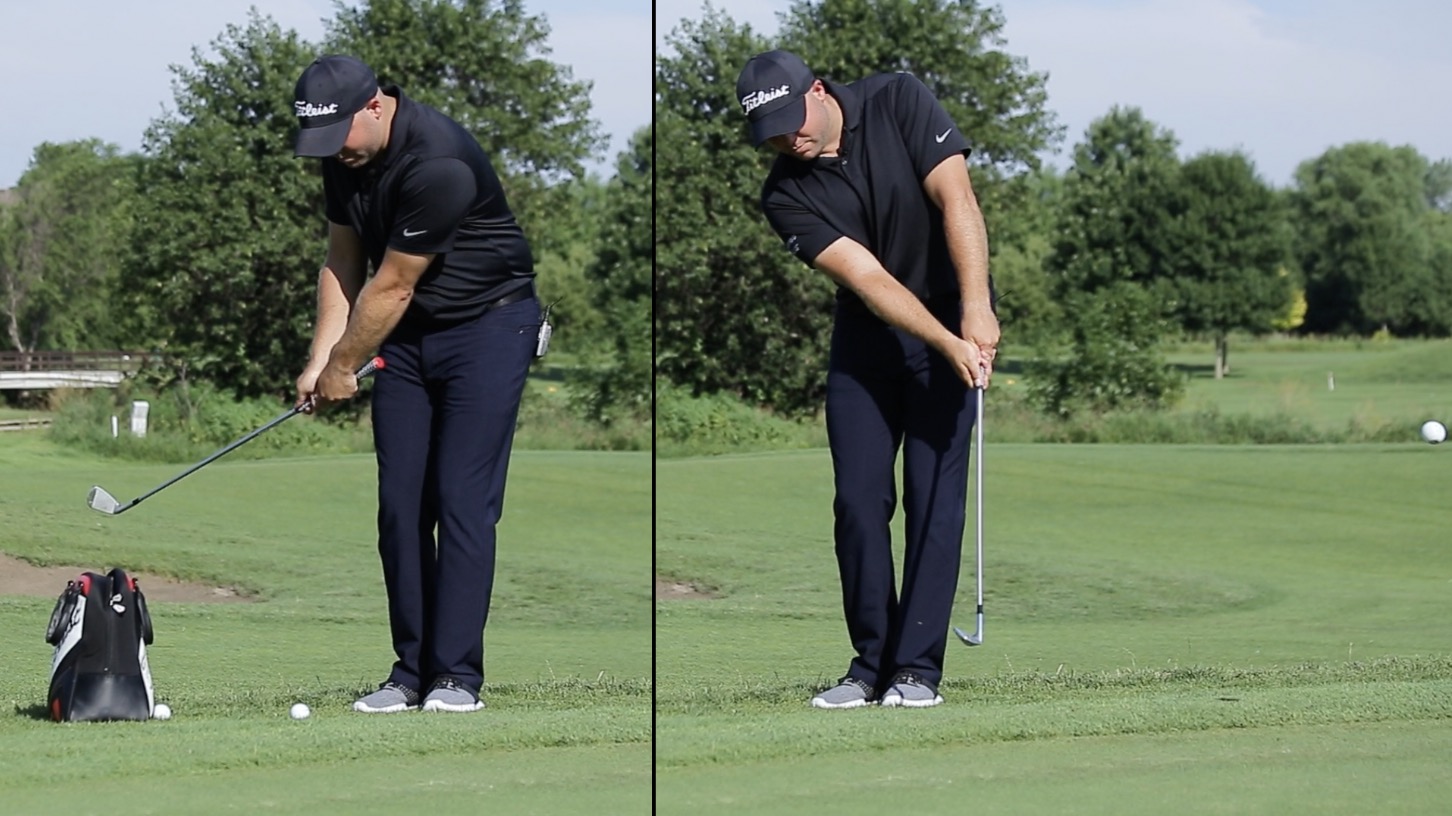Bump and Run: Finally Gain Control of Your Shots
Stop Hoping for the Best With Your Bump and Run. Gain Control and Trust Your Technique with These Simple Tricks.
The bump and run. It’s so satisfying to make that perfect chip shot . . . watching the ball land gently on the green and roll right towards the hole. But how often does that actually happen? And when it happens, do you feel like you made it happen, or like you just got lucky?
So many golfers approach a bump and run with their fingers crossed. They have some technique—tips and tricks they picked up from friends over the years—but they still don’t feel like they’re really in control.
If this sounds familiar, rest assured that the bump and run is actually not rocket science. With the right technique and a little insight, you can approach the green with more confidence.

Here’s everything you need to know about mastering the bump and run and shaving strokes off your game.
What is a Bump and Run?
A bump and run is exactly what it sounds like. It’s a chip shot in which you bump the ball up onto the green with the goal of getting a good roll on the putting surface. Basically, you hit the ball a short distance in the air and let it start rolling toward the hole as soon as possible.
Now, the first time you heard the term, you may have thought it was something did to Martin Truex Jr. in the last lap at Martinsville Speedway (and if you do not follow the , disregard that reference).
Of course, one of the greatest challenges golfers face in mastering the bump and run is simple club selection. Back in the day, golfers had one wedge in their bag. While it may seem like more options are better, limited choice allowed golfers to focus on tailoring their technique for that single club.
Nowadays, you probably have three or four different wedges in your golf bag. And each of those wedges has a different loft. Here’s why that complicates your goal of mastering the bump and run.
Understanding Loft
Loft refers to the vertical angle of the clubface. The higher the loft, the higher your club pops the ball into the air.
Your wedges are your highest lofted clubs, but loft still varies significantly among your 3 or 4 golf wedges. And this is where choosing the correct wedge for a bump and run becomes important.

You see, the core goal of a bump and run is for the ball to spend as much time as possible on the ground. You only want it in the air long enough to get up onto the green.
But when we’re chipping, we tend worry so much about getting the ball up. As a result, a lot of golfers gravitate towards higher lofts. They pull out their sand wedge, gap wedge or lob wedge and try to launch the ball into the air.
For a successful bump and run, you actually want to reduce loft just a little. And the good news is, you can do that easily no matter which wedge you pull out of your bag. Here’s how.
Controlling Loft for a Bump and Run
Let’s say you decide to use a pitching wedge with a 46-degree loft. When you take your set up, you can adjust the degree of loft simply by repositioning your hands.
If you move your hands slightly forward (toward the target) you reduce loft to about 40 degrees. If you wanted to add loft—maybe kick it up to about 54 degrees—you’d move your hands back, tilting the club away from the target.

You can also control loft by tilting the club shaft towards your body (essentially lowering it) or away from your body (so it’s more upright). When you lower your hands, pulling the club toward your body, you open the clubface. This adds loft. When you position the club in a more upright position, raising the shaft, you force the clubhead up on its toe. This reduces loft.
So, how do you use this information to gain more control in a bump and run?
The Perfect Bump and Run Setup
As we’ve often said here at USGolfTV, the perfect setup is key to mastering any shot. That includes the bump and run.
Now, when you set up for a bump and run, you want to pull back on the loft just a little using the techniques we just went over. You still need a little height to get up onto the green, but you don’t want to launch the ball so high that you lose control of the roll.

Here’s how to set up this shot:
- Give yourself a narrow stance with your feet together.
- Get closer to the ball and shift your hands so the club is in a more upright position.
- Put a little more pressure on your lead foot. In other words, imagine your feet are on a weight scale. If you start with weight evenly distributed through both feet, increase the pressure on your lead foot so that scale goes up about 4 or 5 pounds. You don’t want to be heavy on the lead foot, just apply more pressure.
- Position your head so that your lead eye is just slightly in front of the ball. This head position ensures great contact first with the ball and then with the turf. Exactly what you want for a solid bump and run.
Now, let’s talk about your swing.
The Perfect Bump and Run Motion
A good bump and run swing motion is similar to a putting motion. You need these key elements:
- A short stroke that’s even back and through, almost like a putt.
- The motion is all in the shoulders.
- There’s not a lot of wrist motion. A common misconception among golfers is that you need to add wrist movement in order pop the ball up on a chip shot. Not true. Your wedge is already designed to give you the height you need. Since the goal of a bump and run is to keep the ball low and control it, leave the wrists out of it.

It’s also important that you maintain the same pressure in the feet throughout your chipping motion. We really emphasize shifting pressure in the feet through your driver and iron shots, but a bump and run is different. For this shot, you only want the ball to travel about ten yards. You don’t need the momentum build-up that comes with shifting pressure.
Your Bump and Run Cheat Sheet
Now that you know the logic behind this advice, here’s a quick reference for the next time you’re at the golf course.
For the perfect bump and run:
- Take your setup with your feet close together.
- Move closer to the ball with the club in an upright position.
- Put slightly more pressure on the lead foot.
- Position your lead eye slightly in front of the ball.
- Make a nice, even putting motion back and through. Don’t involve your wrists or shift the pressure in your feet.
Practice these tips, and you’ll start seeing more control and consistency in your bump and run shots.
Improve Your Chipping Even More
We hope this advice has given you new insight into one of the trickiest shots in golf. If you’d like a little extra guidance, you can find more great chipping tips right here.
Wondering if a new club could change your game? Hear what we had to say about the much buzzed-about Square Strike Wedge.
Still haven’t found the answers to your questions? Drop us a line in the comments and let us know how we can help. We want to do whatever it takes to help you get more enjoyment out of the game.
For more in-depth golf swing tips, visit us at GreatGolfTipsNow.com. This new video series is completely free and packed with detailed advice to help you play better golf!


I love your content. Hope I am leaving a comment in the correct area. I have struggled with the dreaded shank on chips and pitches for years. I have had a LOT of instruction and for going on 7 years now I have been unable to rid myself of this curse. Is there any cure you can offer for this? Make an old golfers day and please help so I can start enjoying the game again.
Thanks for reading and following our content Michael! Here is a great video to help with this specific topic: https://youtu.be/GcOUunxpz-g
Here is also a great video to help you with your pitch shots: https://youtu.be/qjqtHjWj6sU
Let us know if it helps!
Great advise! Please try not to say “Kay” at the end of each sentence, its unnerving.
Haha, thanks for following and taking the time to comment, and we appreciate the feedback!
Found your instructions very informative.
Will hopefully get great results.
If I might offer some constructive advice: Limit or end the use of the word OKAY. It indicates a degree of uncertainty. You don’t need to use it, as you know your presentation and perform it well. No criticism intended.
Thomas, appreciate you watching and taking time to comment. Your ideas and suggestions are always welcome!
I like and agree with your theory and reasoning about the chipping . While chipping I sometimes “blade” the ball which is annoying. Would please explain the reason and tips to correct it. Much appreciated.
I play mostly desert golf. Being a mid-80’s scorer, touch is a big issue (problem) in my game. Once I started chipping with a hybrid I’ve found it much easier to get the ball closer to the hole than with any wedge or 8-iron, as I’d “choke” and either chunk it or skull it as often as I’d hit an acceptable shot. A few more up-and-downs each round has made the game much more enjoyable….for what it’s worth.
Thanks so much for your excellent tuition and tips. You explanation and directions are so clear and easy to foillow, they have helped me improve my game tremendously.
Duncan,
Thanks for the kind words. Our team really enjoys helping our fellow golfers. Have you joined us on YouTube https://youtu.be/cbkAQ3F–cI
Vijay,
Thanks for asking. Here is a good video which dives deeper https://youtu.be/Dz8NF59xh_0